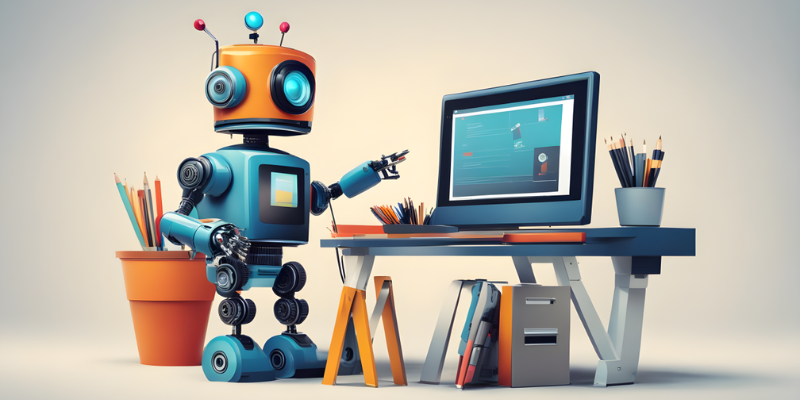
Graphic design is a constantly growing subject that combines creativity and technology. With the start of artificial intelligence (AI), the landscape of graphic design has been revolutionized. AI tools have become indispensable for designers, offering features that range from automating repetitive tasks to generating sophisticated designs. This blog will explore which AI tool is used for Graphic Design. Additionally, Graphic Design Courses in Chennai at FITA Academy offer comprehensive training that integrates these AI tools into the curriculum.
The Rise of AI in Graphic Design
AI has transformed many industries, and graphic design is no exception. The integration of AI in design tools has not only improved efficiency but also opened new avenues for creativity. Designers can now leverage AI to create complex designs, predict design trends, and optimize their workflow.
Automating Repetitive Tasks
One of the significant advantages of AI in graphic design is its capability to automate repetitive tasks. Tools like Adobe Sensei, integrated into Adobe Creative Cloud, utilize AI to streamline various processes. For instance, AI can automatically tag and organize images, suggest color palettes, and even remove backgrounds from images. This automation lets designers to focus more on the creative aspects of their projects.
Enhancing Creativity
AI tools are not just about automation; they also enhance creativity. Platforms like Canva and Fotor employ AI to provide design suggestions and templates based on user input. These tools analyze the user’s preferences and design history to recommend layouts, fonts, and color schemes that align with the desired aesthetic. This feature is particularly beneficial for novice designers who may need guidance in creating visually appealing designs.
Top AI Tools for Graphic Design
Several AI tools have gained popularity among graphic designers for their innovative features and ease of use. Here are some of the most notable ones:
Adobe Sensei
Adobe Sensei is a powerful AI and machine learning framework embedded in Adobe’s suite of products. It delivers a range of features that enhance productivity and creativity. For instance, Adobe Sensei can automatically adjust image compositions, match font styles, and even suggest design elements based on the project’s context. Its ability to explore vast amounts of data and provide real-time insights makes it a valuable tool for designers.
Canva
Canva is a widely utilised graphic design platform that incorporates AI to make design accessible to everyone. Its AI-driven design suggestions and templates help users create professional-quality designs with ease. Canva’s intuitive interface and extensive library of assets make it a favorite among both beginners and experienced designers. The AI features in Canva analyze user behavior and preferences to offer personalized design recommendations.
Fotor
Fotor is another famous AI-powered visual creation tool noted for its easy-to-use interface and robust capabilities. It offers a wide range of templates, photo editing tools, and design elements. Fotor’s AI capabilities include automatic photo enhancement, background removal, and design suggestions. These features enable designers to create high-quality graphics quickly and efficiently. For those looking to enhance their skills, Graphic Design Online Course options provide flexible learning opportunities that integrate seamlessly with Fotor’s capabilities.
Designhill Logo Maker
Designhill Logo Maker is an AI-powered tool specifically designed for creating logos. It uses machine learning algorithms to develop logo designs based on user input. Users can customize their logos by selecting fonts, colors, and icons from a vast library. The AI analyzes the chosen elements and provides suggestions to enhance the logo design. This tool is particularly helpful for small businesses and startups looking to create professional logos without hiring a designer.
DeepArt.io
DeepArt.io is an AI tool that uses deep learning algorithms to transform photos into artwork. By analyzing the styles of famous artists, DeepArt.io can apply these styles to user-uploaded images, creating unique and artistic designs. This tool is popular among designers who want to add a creative flair to their tasks or experiment with different artistic styles.
The Impact of AI on the Design Industry
The integration of AI in graphic design has had a profound impact on the industry. It has democratized design, making it accessible to a broader audience. AI tools have also increased the efficiency and productivity of professional designers, allowing them to focus more on innovation and creativity.
Democratizing Design
AI tools have made graphic design accessible to individuals and enterprises who may not be able to afford to engage experienced designers. Platforms like Canva and Fotor provide affordable and easy-to-use solutions for creating high-quality designs. This democratization has led to an increase in the number of visually appealing websites, marketing materials, and social media content.
Enhancing Professional Design
For professional designers, AI tools offer advanced features that enhance their creative process. AI can handle time-consuming tasks such as image editing, layout adjustments, and color matching, allowing designers to dedicate more time to conceptualization and innovation. The quality of design work has also increased overall as a result of the capacity to iterate and enhance concepts utilizing insights prompted by AI swiftly.
Predicting Design Trends
AI’s ability to explore large datasets and identify patterns has enabled it to predict design trends. Tools like Adobe Sensei can provide designers with insights into emerging trends, helping them stay ahead of the curve. By understanding what styles and elements are gaining popularity, designers can create more relevant and appealing designs.
AI has clearly changed the landscape of graphic design. Tools such as Adobe Sensei, Canva, Fotor, Designhill Logo Maker, and DeepArt.io have given designers additional powers, making the design process more efficient and creative. As AI advances, we may expect even more inventive tools and features that will elevate the art of graphic design. Whether you are a beginner or an experienced designer, incorporating AI technologies may drastically improve your design projects and keep you at the forefront of the industry. Additionally, selecting a trustworthy Training Institute in Chennai may help you improve your abilities and understanding of graphic design.
Also Read: Why is White Space Good for Graphic Design?
